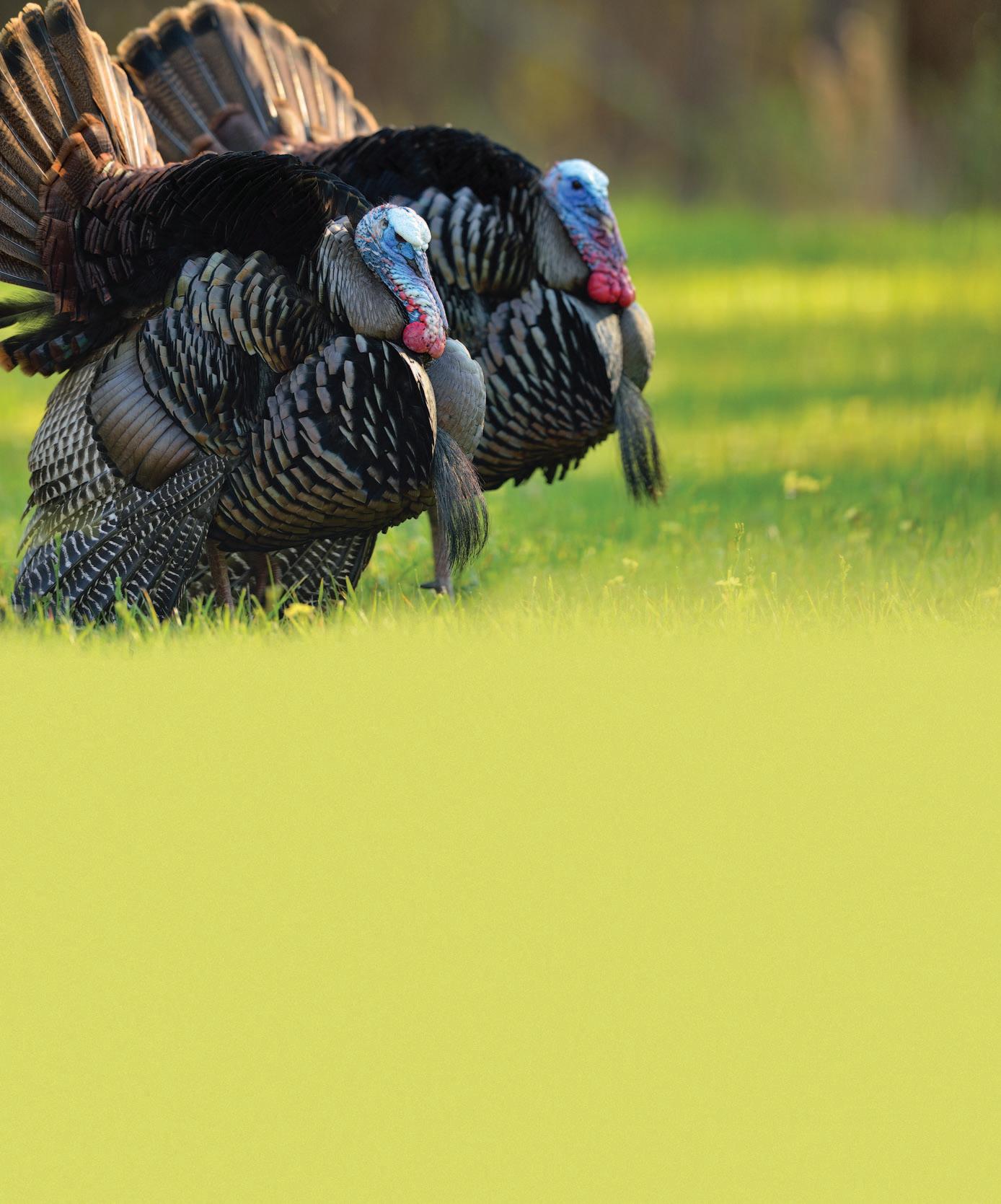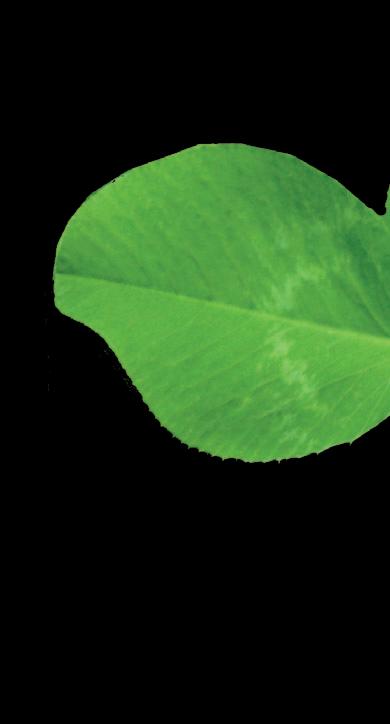
4 minute read
Boost your Deer and Turkey Hunting with Imperial Whitetail Clover

By Brian Lovett Photo by Tes Randle Jolly
Advertisement
atching that emeraldgreen clover plot, shotgun balanced on my knee, I felt like a man in a dream.
Deer had obviously been hammering the lush green growth since the snow receded and would continue to do so through summer and into autumn. But that chilly May morning, I was watching about 15 turkeys — including three strutters — put on a show in the Imperial Whitetail Clover. The landowner had planted the plot to boost local whitetails and improve his bowhunting prospects, but the clover was about to pay second-season results.
Best Overall Choice
That hunt illustrated a point savvy food plotters have known for years: If you’re planting for deer and turkeys, you cannot beat Whitetail Institute’s Imperial Whitetail Clover.
Of course, chufa receives lots of attention from turkey hunters. The Whitetail Institute recognizes that and offers Turkey Select Chufa (see story on page 32). That’s a great choice for someone who just hunts turkeys or has lots of land. But folks who want to attract and
hold deer, turkeys and other wildlife do better with Imperial Whitetail Clover.
Basic turkey biology backs that up. Clovers are among the first plants to green up in spring, and turkeys are attracted to the nutritional benefits of that fresh growth, especially when hard mast and agricultural waste grain are scarce and other common foods — insects and soft mast, for example — haven’t yet developed.
Further, as clover grows tall and lush through late spring and into summer, it provides other benefits for hens and poults. Turkeys will eat the actual clover plants, but a healthy clover plot is also full of insects, and turkeys like to hunt bugs in clover as well. Clover plots will also get thick and tall enough by mid-spring to provide good cover and nesting habitat.
And of course, Imperial Whitetail Clover also provides year-round benefits and attraction for deer and other wildlife. Most land managers hunt deer in fall and winter before turning their thoughts to spring turkeys, and clover plots are obviously important for whitetails. Imperial Whitetail Clover creates two-pronged benefits: critical nutritional and attraction power for deer, and nutritional, nesting and attraction power for turkeys and other wildlife.



“If you have enough available acreage to plant and some of the plots have soils that are too well drained and too dry to support clover, that’s a place you might want to consider planting chufa,” said Steve Scott, Senior Advisor at Whitetail Institute. “But the No. 1 food plot choice for deer hunters who also hunt turkeys is Imperial Whitetail Clover. It offers the best of both worlds. It attracts both game animals.”
Clover also provides a great turkey hunting setting, especially for youngsters, hunters with limited mobility or folks who simply like to sit in blinds. The open fields let you see turkeys at long distances and prepare for a quality shot. Further, they’re great places for decoy setups, as birds can see the fakes from afar and react to them. Gobblers love to strut in clover plots and similar areas, and will return to those spots often during spring. A well-planned setup at the edge of a clover field is often the ticket to a punched tag.
Clover Countdown
That was my hope as I surveyed the turkeys in the field. Hens fed slowly from one side of the plot to the other, raising their heads periodically to check for danger or chase off rivals. Two longbeards stayed in lock step with the girls, never getting farther than a few yards away as they strutted, spit and drummed. Another gobbler stuck to the timber, watching the show, strutting and gobbling to stay in the game. And an awkward jake cruised the perimeter, half-strutting now and then but keeping his distance from the gobblers. My calling and decoy setup had sparked some interest from a few birds, but the gobblers stayed well out of range most of the morning. Still, I remained optimistic, knowing the green groceries in the plot would likely keep the hens around until I could entice a longbeard closer.
My opportunity finally arrived about two hours later, as aggressive calling coaxed the timber-bound gobbler out of the woods and into the field. After a brief march to the plot’s center, the bird looked hard at my jake decoy and then began an intimidating half-strut march toward the fake.
The 30-yard shot was anticlimactic. Sure, I was happy to have killed a great early-season bird, but the two-plus-hour experience with that flock had already made my day. And I realized it had been possible mostly because of Imperial Whitetail Clover.
If you hunt deer and turkeys, consider Imperial Whitetail Clover as the backbone of your all-around management and hunting plan. You already know how it helps whitetail hunting. And the results from spring gobbler season might surprise you. ^













